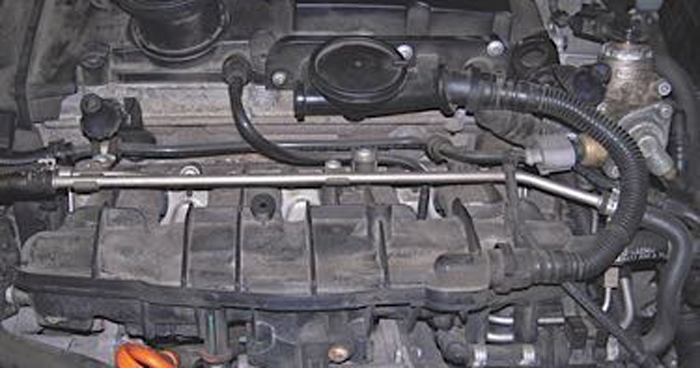When I started working at The Swedish Solution 30 years ago, every car I worked on had continuous fuel injection (CIS). Incoming air would lift a plate, allowing the fuel head plunger in the fuel distributor head to drop, and all four injectors would continuously spray fuel. The coolant temp sensor operated only the temperature gauge. The fuel pressure regulator, which we called a warm-up regulator, gave the engine a little more gas when the engine was cold. It was a fairly simple system. We saw very few California emissions cars with EGR systems, but even those never had the issue of carbon deposits on intake valves due to the continuous fuel bath they received. Running pressures were usually around 2.5 to 3.5 bars.
In 1985, Saab began using the new Bosch LH fuel injection system, and Volvo and other carmakers followed suit. The system worked such that incoming air passed through an airflow meter that sent a signal to the engine ECU telling it how much air was going into the engine. The coolant temp sensor then told the ECU how cold or warm the engine was, and it opened and closed the injectors when needed.
The fuel pressure regulator kept the pressure around 3 bar and, with a drop in vacuum, the fuel pressure would rise half a bar to give the car a little extra fuel when accelerating. Through the years, injection systems incorporated more sensors such as air temperature, EGR temperature and exhaust gas temperature, and the emissions systems monitor how efficiently everything is working. These systems didn’t change a whole lot until around 2006.
While these fuel injection systems worked well, we did see carbon deposits build up on the intake valves — a condition that could cause some poor cold starting. To combat the carbon deposits, we bought a walnut blaster so we could remove the intake manifold and blast the deposits away with walnut shells. Those cars gradually disappeared, and it was about seven years ago when I put the walnut blaster into the storage shed thinking I would never have to use it again…
To read the full article CLICK HERE.
Image Source

